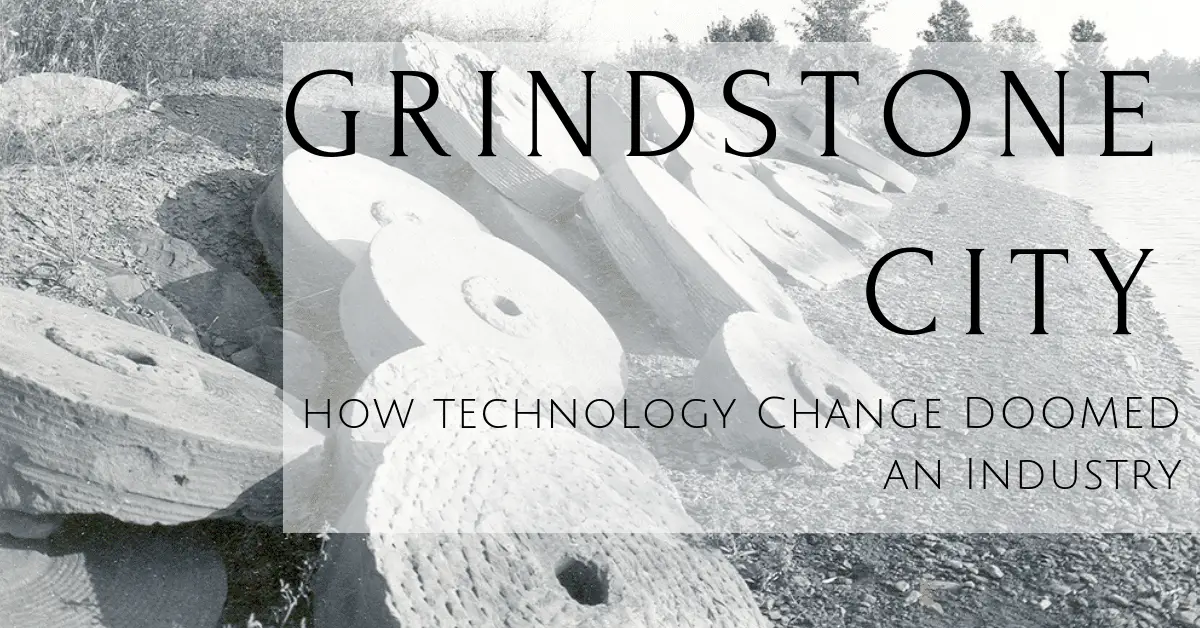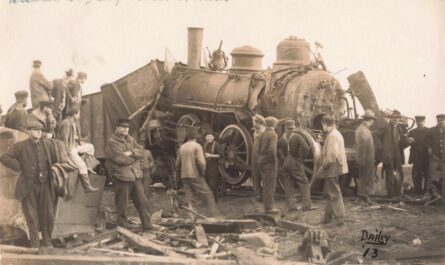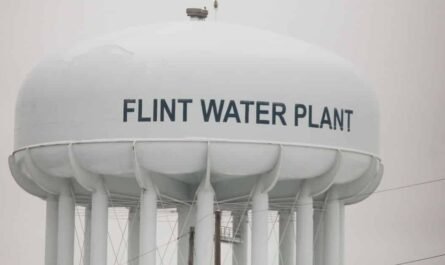Within the Great Lakes region, the rim of the geologic formation of Marshall Sandstone comes up to the surface at the Tip of Michigan’s Thumb. This outcropping of abrasive stone can be found throughout Huron, Jackson, Calhoun, and Ottawa counties. At the extreme edge of this outcropping is Grindstone City.
Table of Contents
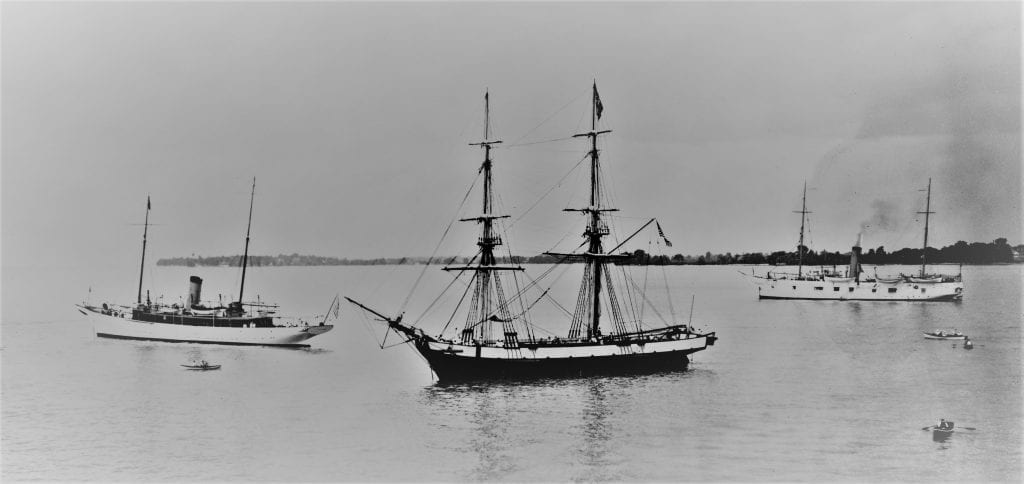
A Great Lakes Storm Starts Grindstone City
The history of Grindstone City starts with a ship seeking shelter from a Lake Huron storm. The schooner Rip Van Winkle, captained by Aaron Peer, came into a natural harbor west of the Pointe Aux Barques Lighthouse in 1834. After anchoring and securing his ship, the crew explored the dense virgin forest and rocky beach for shelter and firewood. This was a wilderness of cedar, pine, beech, ash, and maple. The tall cedar canopy was so thick that snow remained in places even though it was midsummer. The men came across huge flat rocks lying about the shore and forests.
Captain Peer took some of the pieces of this flat stone to Detroit. They found the samples to be impeccably suited for paving streets, replacing Ohio flagstone as the preferred surface. It’s said that this stone was used to pave a few blocks on Detroit’s Jefferson and Woodward Avenues. It was later used as foundation material on several buildings in Port Huron Michigan.
Within a couple of years, Captain Peer and his crew took advantage of the stone to sharpen their tools and began shaping them into grindstones. Shortly thereafter a small port grew from the natural harbor as his men worked inland bringing the sandy abrasive stone out of the forest.
Grindstone City was a Boomtown
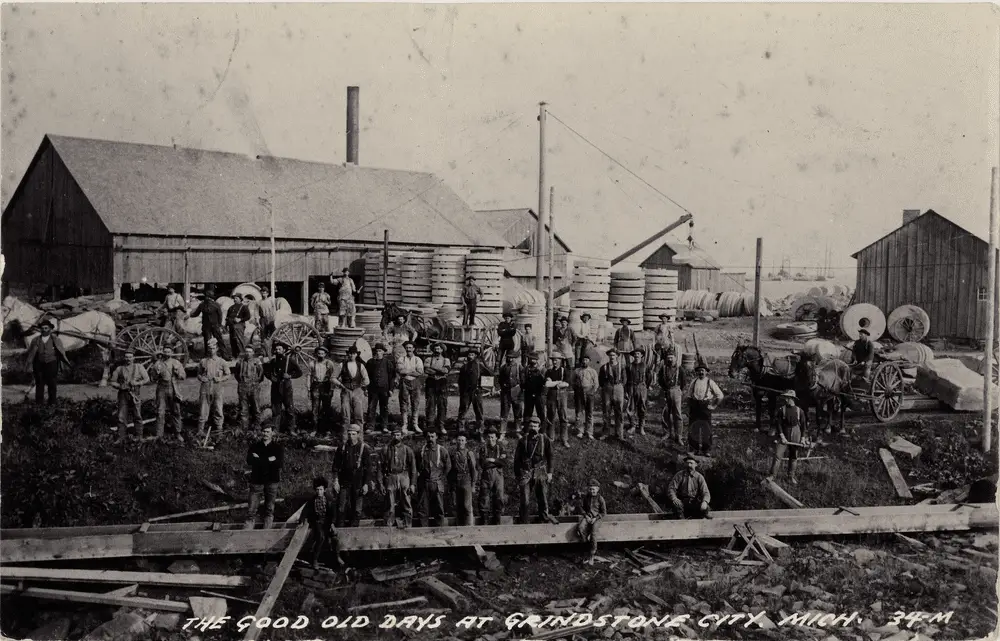
In 1836, Captain Peer purchased 400 acres of land to establish a grindstone quarrying and manufacturing operation. The area that Peer discovered this abrasive stone, its fine grit, was unique to the tip of Michigan’s Thumb and part of the Marshall Sandstone formation. The stone is easy to work with and ideal for shaping.
Peer and his team built a horse-powered grist mill to make grinding wheels and whetstones. The company produced grindstones that varied from small kitchen grinding wheels to large grinding stones weighing 3 ½ tons. The largest stone ever turned weighed over six tons.
Demand for the large sharpening stone soon earned the Upper Thumb the nickname of Grindstone Capital of the World. The Company town started with a stone-cutter grist mill and grew with a wharf out into Lake Huron, two quarries, a company store, and offices. A salt block was built to extract salty brine and evaporate it. The operation produced 125 barrels of salt each day. By the 1870s the first railroad built was built into Grindstone City to offer less reliance on ships.
From the 1830s until the 1910s, Grindstone City produced the premier grinding wheels in the United States. In 1888, the Cleveland Stone Co. Purchased the property owned by Worthington and Sons and became the sole owner of all quarry properties. They continued to operate the store and quarries but the salt works were discontinued, as operating costs made it no longer profitable.
They built a mill to make scythe stones, whetstones in addition to grindstones. The grindstones made here vary in size and weight from small kitchen stones six to twelve inches in diameter, weighing 3 ½ to 10 lbs. To large grinding stones weighing 3 ½ tons or more. The largest stone ever manufactured weighed over six tons.
Grindstone City became a fast-growing industry that produced the largest and finest grindstones, scythestones, and honestones in the world.
New Technology Dooms the Town

The boomtown days were numbered as a new technology was developed. Carborundum was discovered in 1893 by, E.G. Acheson. This silicon powder has a crystal structure like that of diamond and is ideal for cutting, grinding, and polishing. Economical to produce, Carborundum started taking the place of grinding stones, and the quarries could no longer be operated at a profit.
Grindstone City stumbled into swift decline, and all quarrying and production operations ceased in 1930. Most of the machinery was shipped to Cleveland, Ohio. A steel cutter who came here from Detroit broke up the worn-out materials. This steel and iron were sold as scrap.
Grindstone Lures Tourist and Cottage Seekers
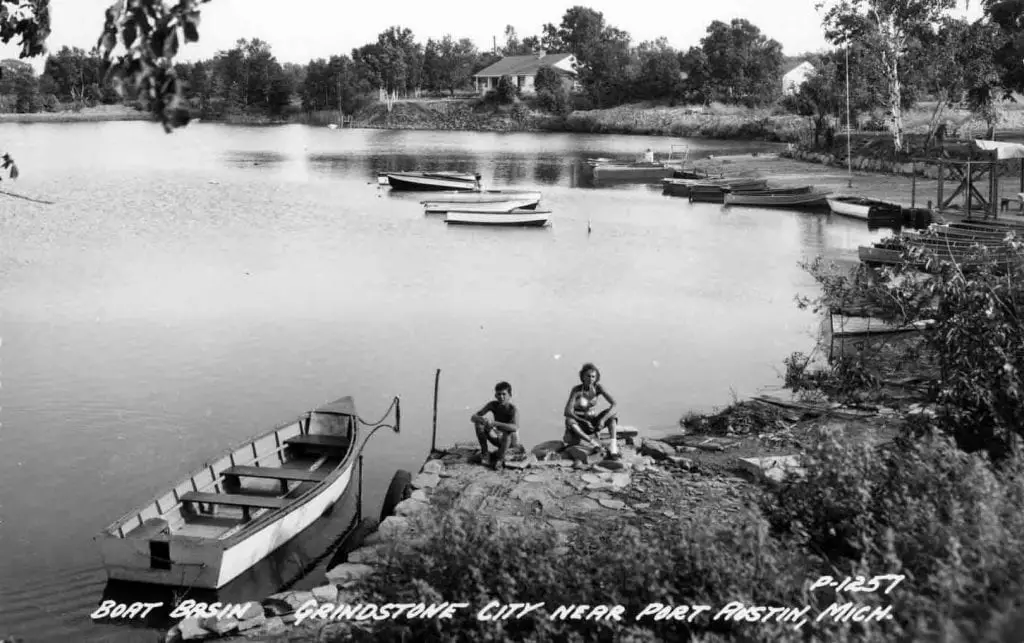
Today Grindstone City is a vacation destination and retirement community. Remnants of the town are still visible. The General Store is still operating as
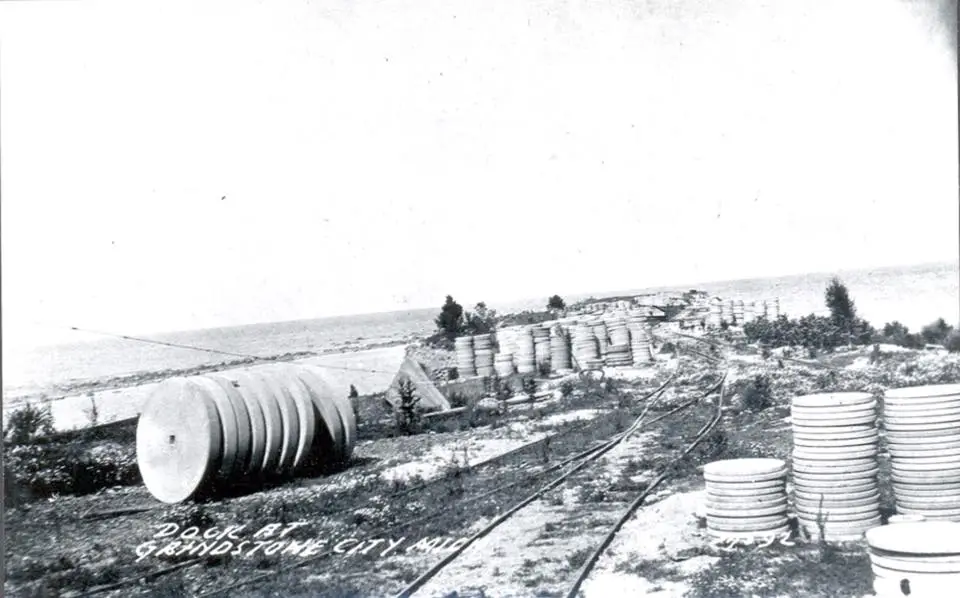
Grindstone City is also known for sports fishing in Lake Huron. Grindstone City Charter Fishing boat captains take anglers out in the big lake for salmon, lake trout and brown trout, steelhead, walleye, and yellow perch.
Massive grindstones can still be seen along the shoreline of the long-vacant pier that juts out into the lake. The natural harbor still looks as it did in the 1830s when the first grindstone rock was discovered.
Finding Grindstones Today
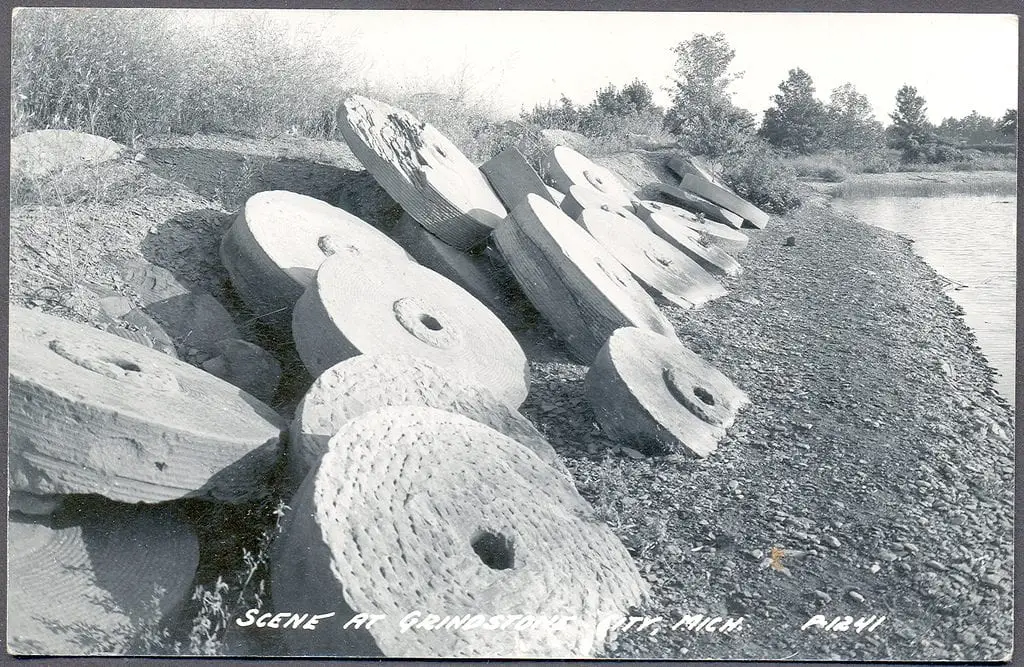
Grindstones can still be seen on the shore north of the city. Abandoned stones littered the beach for years. People started to pick them up and use them as lawn decorations for their cottages in the Upper Thumb. Today only the largest of the old grindstones remain.
Owners of the Grindstone Quarry and Operations
Grindstone Quarry One
| Owner | Year |
| Pease & Smith | 1834 |
| Peer | 1839 |
| Wallace & Prentiss (aka: Lake Huron Stone Company) | 1841 |
| Cleveland Stone Company | 1888 |
Grindstone Quarry Two
| Owner | Year |
| W. Cooper | 1865 |
| Worthington & Sons | 1871 |
| Cleveland Stone Company | 1888 |
Related Reading for the History of Grindstone City
- Mystery of the Holes Found at Rush Lake
- Ice Cream Wars in Grindstone City
- Great Lakes Ship Travel in the 1800s
- Michigan Monday – Pulitzer Prize Author Jeffrey Eugenides
- 7 Michigan Bird Feeder Types Every Cabin and Cottage Birder Must Know
- Michigan Thumb Native René Kladzyk Is A True Romantic
- 7 Unique Things To See And Do Near Sebewaing Mi
- The Story Behind a 1908 Bay City Postcard

